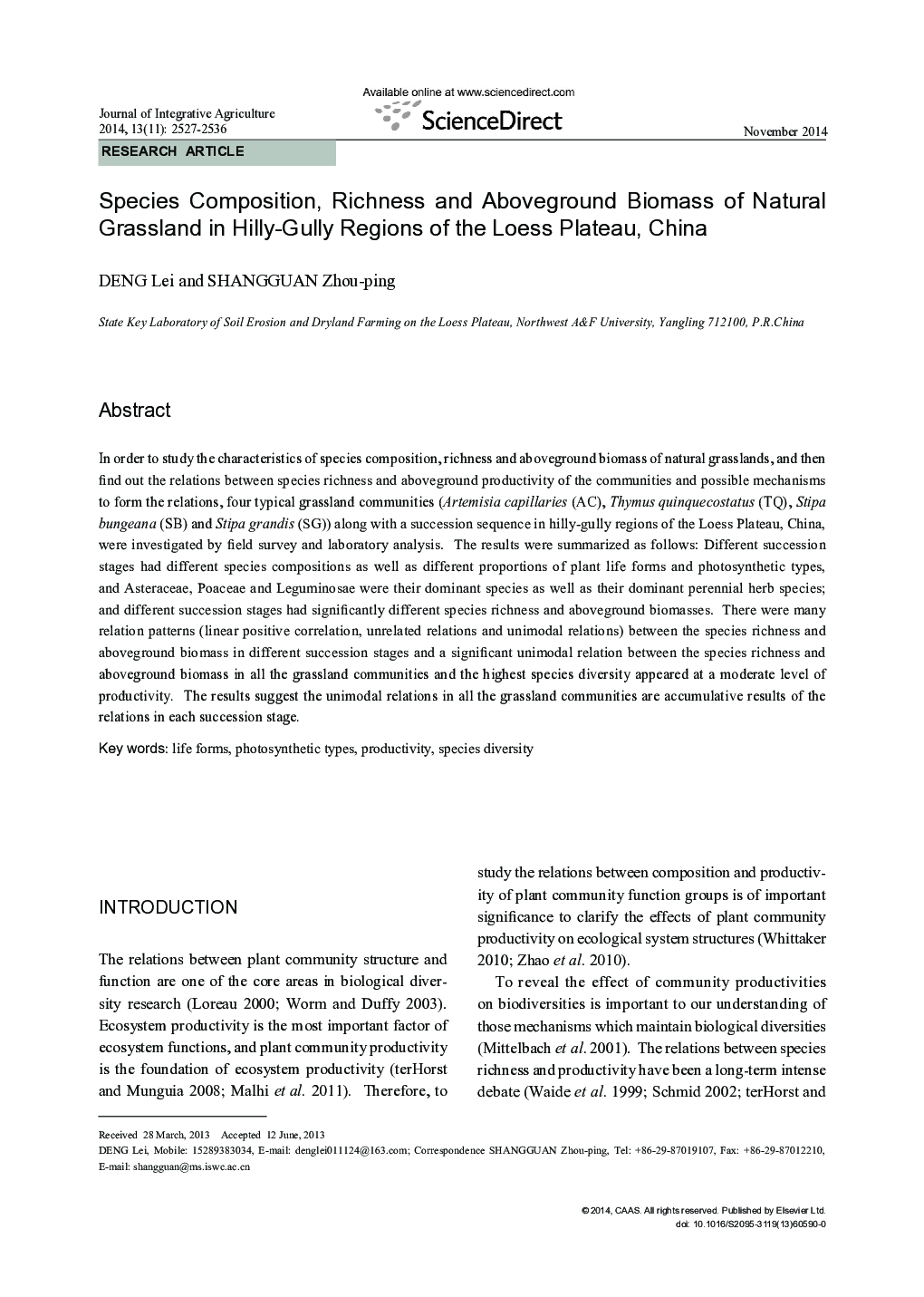| کد مقاله | کد نشریه | سال انتشار | مقاله انگلیسی | نسخه تمام متن |
|---|---|---|---|---|
| 4494449 | 1318715 | 2014 | 10 صفحه PDF | دانلود رایگان |
In order to study the characteristics of species composition, richness and aboveground biomass of natural grasslands, and then find out the relations between species richness and aboveground productivity of the communities and possible mechanisms to form the relations, four typical grassland communities (Artemisia capillaries (AC), Thymus quinquecostatus (TQ), Stipa bungeana (SB) and Stipa grandis (SG)) along with a succession sequence in hilly-gully regions of the Loess Plateau, China, were investigated by field survey and laboratory analysis. The results were summarized as follows: Different succession stages had different species compositions as well as different proportions of plant life forms and photosynthetic types, and Asteraceae, Poaceae and Leguminosae were their dominant species as well as their dominant perennial herb species; and different succession stages had significantly different species richness and aboveground biomasses. There were many relation patterns (linear positive correlation, unrelated relations and unimodal relations) between the species richness and aboveground biomass in different succession stages and a significant unimodal relation between the species richness and aboveground biomass in all the grassland communities and the highest species diversity appeared at a moderate level of productivity. The results suggest the unimodal relations in all the grassland communities are accumulative results of the relations in each succession stage.
Journal: Journal of Integrative Agriculture - Volume 13, Issue 11, November 2014, Pages 2527-2536
